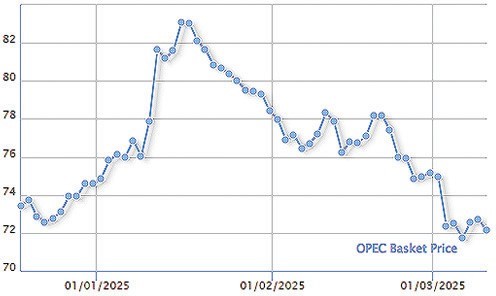A rash of incidents in the oil industry over the last year and a half has failed to prompt any expression of concern by professionals or the public.
The fires and explosions are happening at the rate of one every three weeks, which one would expect would be sufficient to arouse some expression of concern and some emphasis on safety. But it has not.
The latest incident was a fire at the Abadan oil refinery last Wednesday.
The Fars news agency quoted Majlis Deputy Abdollah Kaabi, vice chair of the Majlis Energy Committee, as saying four people were injured when a fire erupted in the same unit of the refinery that burned May 24 when President Ahmadi-nejad was visiting.
But Abadan refinery manager Moslem Rahimi denied that story. He told the Mehr news agency no one had been injured. He said all that happened was that some sparks from one of the Abadan furnaces set some grass near that furnace on fire, burning an area that was just 10 meters (30 feet) across. He said the fire had no impact on any of he refinery’s operations.
One month ago, an explosion was followed by an immense fire on a 20-inch pipeline that carries crude oil to a processing unit in Ahvaz. The flames engulfed a stretch of pipeline the length of three football fields and rose 40 meters (130 feet) into the sky. The fire was finally extinguished only after a 10-hour battle by firefighters. That was the last industry incident.
Most analysts believe the rash of incidents reflects poor maintenance and little emphasis on safety precautions. However, there is always speculation about sabotage.
The death toll from all the incidents over the last 15 months is believed to have exceeded two dozen.
The 20 destructive events have been widely scattered at locations all around the country, which make an organized campaign of sabotage appear unlikely. Also, no opposition group has claimed credit for any of the incidents.
The incidents have varied widely Last February, a fire engulfed several oil tanks on the island of Qeshm in the Persian Gulf. Heydar Yarveisi, head of the Iranian Offshore Oil Co., said the blaze was caused by a lightning strike on an oil tank in a tank farm-one of the few cases in which an official ascribed a cause. He did not explain why lightning rods failed to protect the tanks from a strike.
Another incident involved the rupture of a huge 48-inch diameter crude oil pipeline near the city of Daylam on the Persian Gulf coast in Bushehr province. Some reports said there was an explosion in the pipeline; others simply described the pipe as corroded.
Mohammad Baqeri, an official of the Environmental Protection Organization, told the Iranian Labor News Agency the oil had leaked for 10 to 15 hours, an astoundingly long time. Amir Sediqi, head of the Environmental Protection Department in the province, said an oil slick stretched 20 kilometers (12 miles) along the coastline and 8 kilometers (5 miles) out to sea.
What’s more, Baqeri said the rupture occurred inland and the oil was washed into the sea by a rainstorm so that 400 hectares (1.5 square miles) of farmland had been ruined as well.
There was an explosion last November 28 at the Tamarchin border checkpoint near Piran-shahr in West Azerbaijan province. Nine tanker trucks that were being cleared through the border post caught fire. Three Iraqi drivers were killed. The governor of Piranshahr blamed the incident on the Iraqi drivers for leaving their trucks unattended and failing to observe safety and traffic rules. It wasn’t explained how the drivers were killed in the explosion if they had left their vehicles unattended.
An explosion occurred October 21 on the deck of an oil pipe storehouse in Khorramshahr. An announcement said one man was killed and two others injured. It blamed the blast on some ammunition that had been stored at the site during the 1980-88 war and never removed. No one has said why the ammunition was not removed in 22 years.
An immense explosion August 6 near Mashhad erupted as a bulldozer operator was trying to dig a trench for a new gas pipeline but hit an existing gas pipeline. The resulting ball of fire engulfed an area 600 meters, or more than a third of a mile, across. There were conflicting reports on deaths and injuries, but at least four workmen died that day. Some reports said the death toll later reached 10 because of serious injuries.
The 20 disruptions have not only been widely scattered physically but have involved gas, oil and petrochemicals. The map below shows the locales.
Last August, five men were killed when a blast erupted from a gas leak while workmen were welding an ethane pipeline at the Pardis petrochemical plant in Assaluyeh port on the Persian Gulf coast. The plant had been inaugurated days earlier by President Ahmadi-nejad.
This May another explosion erupted at the huge Abadan oil refinery the very day Ahmadi-nejad had arrived to formally inaugurate an expansion there. Critics blamed Ahmadi-nejad, saying the plant was not ready to be opened and he had rushed things. But all around the world, formal inaugurations take place at building sites where the work has not been completed. The condemnations of Ahmadi-nejad died out in days, indicating that even the vocal critics did not believe what they were saying.
The first in this chain of incidents occurred May 29 of last year with an oil well blowout and fire in Kermanshah province. Firefighters needed nearly 40 days-an inordinate length of time by international standards-to extinguish the blaze, which killed three workers, injured a dozen more, and sent balls of flame into the air. At its height, that fire was consuming 8,000 barrels of oil a day.




















